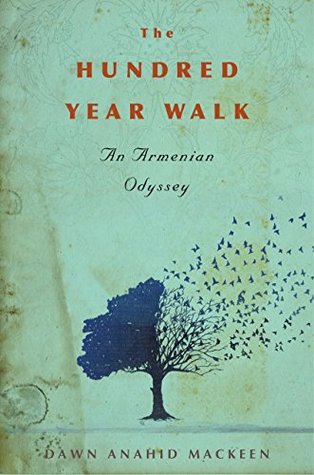More on this book
Kindle Notes & Highlights
From 1915 to 1918, an estimated 1,200,000 Armenians perished.
Adolf Hitler, before his invasion of Poland in September 1939, said: “Kill without pity or mercy. Who still talks nowadays of the extermination of the Armenians?”
describe “the murder of a nation,” as Henry Morgenthau, the American ambassador
name for non-Armenians—odar—which, he joked, sounded suspiciously like odor.
Baba’s hometown, then called Adabazar, but now Adapazarï.
sanjak, or county,
Almost everywhere else in the empire of some twenty million —a stew of Arabs, Turks, Greeks, Jews, Kurds, and others—the two million Armenians were outnumbered. But in Adabazar, about a hundred miles east of Constantinople, Armenians made up half of the approximately thirty thousand residents.
Armenian ethnicity by their last name: it ended with –ian, or “son of.”
oghi, an anise-flavored spirit,
To the Armenians, their hometown wasn’t called Adabazar; it was Asdvadzareal Kaghak, the God-Created City.
Bosh meant “empty.”
1908, a political revolution had drastically changed his life, and that of many others in the empire. Before that Stepan could only sell his goods only within his sanjak. After the rebellion, the new leaders lifted the long-standing travel restrictions, and Stepan was now allowed to take trips to Constantinople for business.
The party behind the advancement, the İttihad ve
Terakki Jemiyeti, or Committee of Union and Progress (CUP), had blazed into power by seizing government buildings an...
This highlight has been truncated due to consecutive passage length restrictions.
The new Muslim leaders were intellectuals and exiled officials who became known as the Young Turks.
the CUP and its professed trinity of ideals: liberty, equality, fraternity.
Under Ottoman governance, non-Muslims were broken into millets, or religious communities, each with its own patriarch, local councils, and distinct laws that often treated them unfairly.
paying higher taxes to the government and local officials and lacking a voice in court.
also denied the right to bear arms,
Stepan was about eight years old, frustration among Armenians mounted. They wanted reforms. The sultan had previously promised to install a new constitution that guaranteed certain rights—but it was quickly suspended. Pockets of Armenians rose up. The sultan cracked down, and many were killed. Nonetheless, still hoping for change, a few more Armenian towns rebelled.
“Another Armenian Holocaust: Five Villages Burned, Five Thousand Persons Made Homeless, and Anti-Christians Organized,” read the New York Times on September 10, 1895.
some two hundred thousand Armenians were massacred from 1884 to 1886, and man...
This highlight has been truncated due to consecutive passage length restrictions.
to Islam. This violence earned Abdul Hamid II the epithet...
This highlight has been truncated due to consecutive passage length restrictions.
He gave a warm yassas, “hello,” to his Greek customers, a marhaba to the Turks, and a parev to the Armenians,
Efendi, the equivalent of Sir.
the Italians had attacked western Tripoli, the Ottomans’ last real North African territory, given that Egypt had practically become British. With that, the Turco-Italian war commenced, and it dragged on into 1912.
even the fortunes of the Young Turks had flipped. After a few years in power, they lost their
political support and positions in the cabinet.
of “insulting Turkishness.” Article 301, a relatively new Turkish penal code designed to silence a nascent dialogue about the past, had made this a crime.
including one of Turkey’s most famous sons, Orhan Pamuk, the recipient of the 2006 Nobel Prize in Literature.
I’d use the words of the Turks in Turkey, referring to that moment in history as the “Armenian question.”
“The national demonstrations of the Armenians in Constantinople
began to take unusual forms,” wrote Jemal Pasha, then the city’s military governor,
“They organized great celebrations in memory of the anniversary . . . of the discovery of the Armenian alphabet. They carried their audacity to the point of throwing confetti in the Armenian national colors about the stre...
This highlight has been truncated due to consecutive passage length restrictions.
necessary steps to prevent ugly...
This highlight has been truncated due to consecutive passage length restrictions.
a notorious kind of Ottoman torture called falaka, or bastinado, beating the bare soles of the inmates’ feet until the men could no longer walk.
the CUP leaders had signed a secret treaty with the Germans.
the bedel, the forty-two-gold-pound fee, exempting him from mandatory service.
Soon, the Ottomans would sign another secret treaty, this time with
Along with the Greeks, the Armenians were consigned to be pack animals—the crud on the Ottoman army’s boot.
the yemeniji, or slipper maker.
In the month prior, the CUP had repealed the capitulations, the privileges that allowed Europeans to live and work in the empire, while exempting them from Ottoman laws.
By the middle of November, Sheikh ul-Islam, the influential religious leader of Ottoman Muslims, issued a ruling—a fatwa—urging fellow Muslims to wage a holy war against the Allied Christians.
February 19, 1915, an armada of French and English warships and cruisers made a surprise attack on the Dardanelles, beginning what would become known as
the Gallipoli campaign.
“The Turks were silent, the Jews and Greeks were unconcerned, but the Armenian soul was perturbed,” Garabed Hovhannesian wrote.
Dispatches of this were making their way back to Henry Morgenthau, the American ambassador in Constantinople. “In almost all cases the procedure was the same,” he wrote. “Here and there squads of 50 or 100 men would be taken, bound together in groups of four, and then marched out to a secluded spot a short distance from the village. Suddenly the sound of rifle shots would fill the air, and the Turkish soldiers who had acted as the escort would sullenly return to camp. Those sent to bury the bodies would find them almost invariably stark naked, for, as usual, the Turks had stolen all their
...more
For the Armenians, April 24, 1915, was the beginning of the end.
The Mïsïr Apartment
boereg, cheese-filled phyllo, and the lahmajun, thin dough topped with minced meat,


